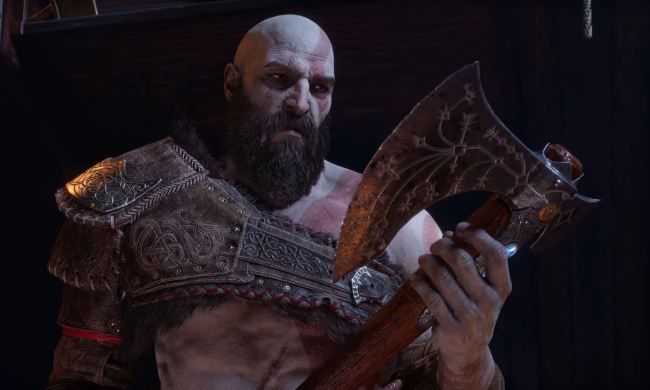Prey for the Gods is still seeking funding on Kickstarter, and is currently less than $50,000 below its $300,000 goal. The developers are hoping to release in December of 2017
No one said it would be easy. Braving the blistering cold and isolation is one thing, but add in the ghostly wraiths that plague you, and the massive Gods that share this place, and your odds of survival just dropped to zero.
But this is Prey for the Gods, by No Matter Studios, and impossible means nothing to a bold heart and a quiver full of arrows. Climbing mountains, slaying giants, and running from supernatural forces will make up the rest of your life, however short it may be.
Surviving an unforgiving world
While Prey for the Gods’ giants — an admitted nod to the cult hit Shadow of the Colossus — are the splashiest feature in the trailers, there’s far more to this Kickstarter game than that. Players will walk away from the game as worried about frostbitten toes as 200-foot titans.
“Prey for the Gods is a game about making choices and facing the consequences.”
Three feet of snow covers everything in sight, and it isn’t just for show. The dynamic weather will challenge players to find somewhere warm when the winds pick up, or else face the same fate as other fallen heroes strewn about the ruins.
While the demo we saw showed off a tiny slice of the final game, it was enough to see the experience and passion of the trio behind the project. There’s clearly an organic motivation driving each rock and sculpture. Prey for the God’s unforgiving world starts to feel like as much of a character as the player that inhabits it.
Without a dedicated tutorial or UI, there’s nothing to distract you from real-world clues, like the way statues are laid out during a boss fight, or where there might be a ledge or enclave hidden from view. Even small details, like your tracks in the snow, become important factors in ensuring you find safe respite from the cold, but it’s easy enough to lose them when the wind whips through the trees.
When you find shelter from the blizzard, you’ll have to make tough choices. Do you use wood you found to stoke a fire, or craft extra arrows? Choose wisely, as one wrong move may leave you at the mercy of the Gods.
The big man
Like the rest of the game, boss battles seem to defy the expectations of anyone who tries to put them in a box. The massive scale and climbing are clearly inspired by Shadow of the Colossus, but the second-to-second loops feels more like Dark Souls or Shadow of Mordor. With only a quiver of arrows at your disposal, your only option is to pay close attention to the boss’s every move, and dodge accordingly.
There are no hints, so you’ll have to figure out how to beat each boss on your own. The trick is that there’s no “right” way to do it. Whether you have a full quiver, or all you have is a grappling hook and your knife, you can find a way to scale the beast and take its life.
There will be five bosses in the initial release, and they’ll be found around the world, although not in any linear order. No Matter Studios is still working on the details, but the idea is to leave your survival and completion of the game in your hands. Creating memorable moments is the key, and they happen often when the bosses are built like skyscrapers.
Death is only the beginning
“Prey for the Gods is a game about making choices and facing the consequences,” according to the game’s director, Brian Parnell. That’s all he was willing to share before he stopped himself, the excitement of what’s to come nearly bursting forth. The consequences he refers to were extremely evident as we struggled through deep snow past frozen bodies, dressed the same as our character, hanging from broken arches.
This gives a lot more weight to each and every step than the clean-cut worlds of games like Faster Than Light. It’s the equivalent of your last ship’s remains floating by during the final boss approach, reminding you of the failures of those who came before you. Expect to experience failure a lot, too, particularly in the beginning, as you suss out right and wrong decisions. You weren’t the first one to brave this land, and you won’t be the last.
Which brings us to the end of the demo. Kneeling, as if in forgiveness, our protagonist plunged a blade into the back of the God’s neck, an ending which the team says will be more fleshed out eventually.
The big question that remains though is — why? What’s leading your character to battle the deadly cold, crippling isolation, and painful demise at the hands of the very Gods you worship? It’s that mystery that will drive players to Prey for the Gods even after countless deaths.






